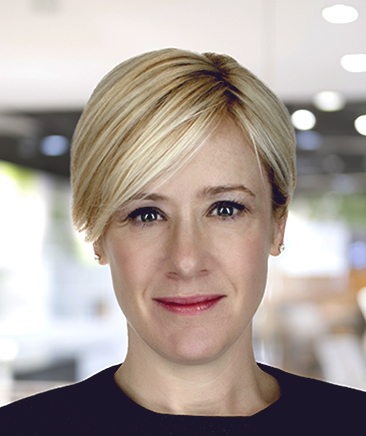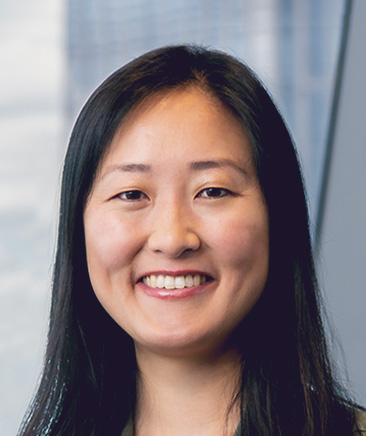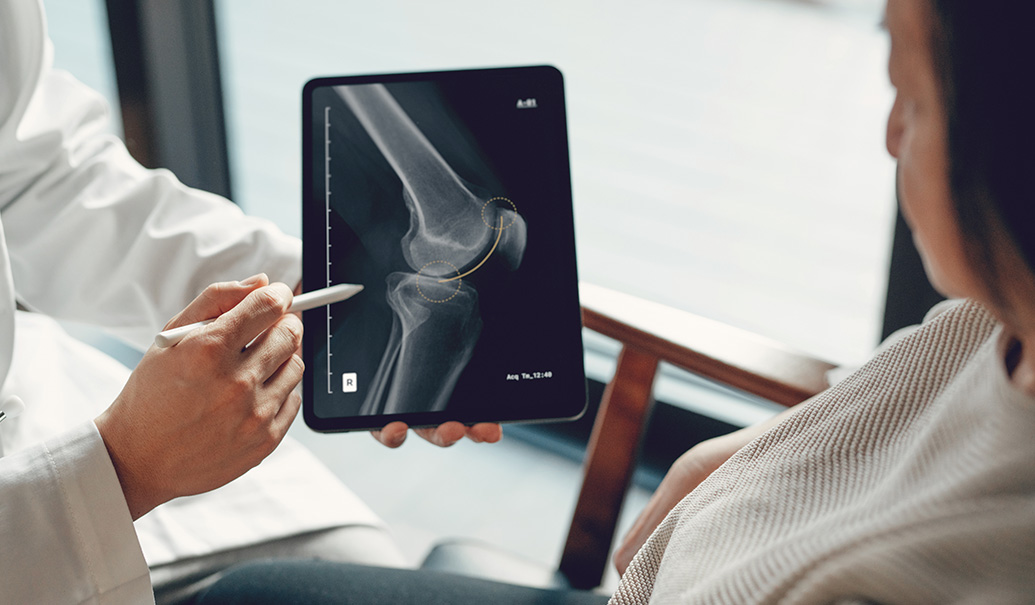Digital has become an increasingly prominent part of the work ZS does for our clients, from strategy through execution. Because it’s such a hot topic, we assembled a panel of experienced female medtech industry executives to discuss the intersection of digital and medtech, its evolution and the next frontier. The key themes we explored ranged from how medtech companies should define digital health to how they prioritize products and services, keep ahead of data-sharing regulations and quantify business value and patient impact. Sponsored by ZS’s Women in Medtech group, the panel also discussed the value of supporting, growing and amplifying women’s leadership in medtech.
The panel included Stephanie Bova, former head of strategy and innovation for the corporate digital accelerator at BD (now digital transformation officer, drug development at Novo Nordisk), Sharrolyn Josse, who is worldwide president of joint reconstruction at DePuy Synthes, Mika Nishimura, an operational partner with transatlantic venture fund Gilde Healthcare, and Vicky Zhou, a partner at ZS who leads our digital and connected health practice for medtech and healthtech. Anne Smart, a ZS partner who leads our medtech strategy and portfolio practice, moderated the discussion.
Anne Smart: As you think about your role and career trajectory in the space, what does it mean to you to be a female in a medtech environment?
Sharrolyn Josse: I think it’s about bringing your authentic self and staying curious. Ensure you are an active participant in shaping the landscape because diverse experiences and opinions are what’s driving this evolution.
Mika Nishimura: When I started my career, I didn’t realize how fortunate I was to work at a company with incredible, female senior leadership role models who I looked up to and who cared deeply about mentoring women and sponsoring women. I didn’t realize how unique that was, especially back then. Ever since, I’ve tried to re-create that environment.
Stephanie Bova: I’ve been helped by a lot of women but also by a lot of men. Having a good support network is critical, no matter who you are. Figure out who is going to be there to help you and be a promoter, advocate and adviser.
Vicky Zhou: I think it’s critical that our voices are heard, from the design and development of medical devices to the commercialization of them. Women make up half the population but represent 80% of healthcare decisions. I think it’s essential for the industry to have our point of view.
AS: How do you define “digital technologies”? What does that term mean in your world?
MN: Our venture fund started looking at digital health in 2016, and I admit we struggled for a little while on defining what digital health meant to us. Where we eventually landed, if you look at our portfolio, is on several digital health investments that range from visual therapeutic programs in cognitive behavior therapy to a wearable sensor for people with chronic obstructive pulmonary disease (COPD) that helps reduce emergency room admissions by enabling earlier interventions.
SJ: It all starts with the unmet needs we’re trying to solve for patients, surgeons, caregivers, payers and ourselves in terms of how to drive more efficiencies in our business. Historically, we’ve been very focused as an implant company, very focused intraoperatively. As we start to think about those unmet needs and about reproducibility, predictability and cost savings, we’ve realized we cannot focus only on what happens as interoperative solutions but also on what happens pre-op, peri-op and post-op. How do we take data sets and bring them together to create a continuous loop of data generation? Can that start to provide risk scoring? Can that start to drive algorithms that predict optimized treatment offerings? Where are the areas in a procedure that we need to elevate training or elevate experiences? As we use data comprehensively, it can help us drive more focus and understand where our impact is most needed to drive those outcomes that started with unmet needs.
AS: Stephanie, can you share your perspective on product development?
SB: One thing that sometimes doesn’t get well represented is the fundamental business model. We have a great number of products and technical solutions, whether they’re physical or data driven. The question is, “How will we get value realization and drive adoption?” This is something we’ve all experienced. A lot of money can be poured into development very early on without thinking about how to test for business-model viability.
Specifically with respect to digital technologies for women, it’s been a mixed bag. I would focus on two things. The first is that many digital solutions are based on male-centric research and design. If you look at cardiovascular disease, a leading cause of mortality, symptoms and risk factors can differ by gender. The algorithms typically are trained on predominately male data sets, so the sensitivity can be off for women. Second, there’s also an underrepresentation of women in design. Women can bring an enormous amount of insight to product development.
AS: Vicky, I’m curious to hear how you see our ZS clients approach digital differently and how we’re translating that into helping companies address market opportunities.
VZ: The value of digital comes when you create insights from data to create action. The framework I use is DIKW: data, information, knowledge and wisdom. The further along you get on that spectrum, the greater the value you create. Where are the opportunity areas today for digital? I see two different spectrums. One is the patient journey, and the second is the manufacturer value chain.
With the patient journey, think about how you use digital to improve anything from pre-diagnosis to diagnosis, to pre-, peri- and post-procedure care and to long-term monitoring. At ZS, two of the areas we help clients with include the patient experience and services along this journey and digital medicine that can create better health outcomes.
When it comes to the manufacturer value chain, we use digital to create value for research and development, the supply chain and commercial. There’s opportunity throughout to use data and improve all those functions. One example of an area we’re excited about within ZS is digital evidence generation: using digital tools and collecting digital endpoints to create better evidence around the outcomes we’re driving.
AS: Sharrolyn, what do you think are the biggest opportunities right now?
SJ: I always tell my team we can do anything, but we cannot do everything. We need to prioritize what will matter most for the patient and surgeons. In medtech, there are many opportunities and questions we should ask ourselves. We know there is a huge opportunity to engage more with patients and improve patient satisfaction. Many studies look at rapid recovery and the correlation between outcomes and patient education. We know that with COVID, more surgeons and patients have adopted telehealth. At J&J, we think there’s an opportunity to find synergies between medtech and pharma. There are technologies rapidly evolving such as haptics, automation and artificial intelligence, to name a few. The opportunity goes back to making sure we understand what we’re trying to solve for and can prioritize the different directions we could go.
AS: What are you hearing from providers? Do they feel like medtech is moving fast enough?
SJ: I think there’s a tale of two worlds. I think there’s one with pushback because of the concerns about patient privacy, cybersecurity and the data we’re sharing. The contracting between industry and hospitals to enable the sharing of data is no small effort. It’s also making sure our teams understand and can articulate where the data is being used and not used since there are more stakeholders to align with in the hospital setting such as procurement officers, IT departments and legal teams. On the flip side, they’re asking medtech to help them. They need more reproducibility and desire fewer complications. Many hospitals use technology to attract more patients. And then there’s the tale of regulators who also are trying to understand when these decision tools become a medical device. The quest to understand how we are using and regulating medtech, specifically when it comes to digital and data, is moving very quickly in an effort to do right by the patient.
AS: Mika, thinking about the value demonstration, what leads you and investors to believe in the promise of these technologies?
MN: Just like in traditional medtech, the questions many investors ask shifted from regulatory pathways and risk to reimbursement models and who’s going to pay. What’s your strategy for building an economic case so that people see the value in what you’re bringing and will pay a fair share? For the COPD company we invested in, for example, each episode of exacerbation and hospitalization costs a health system approximately $20,000. It’s big money, and if you can prevent some portion of that, that’s a lot of dollars. There’s enough to go around. How to strike a deal with health systems to share the profits and share the risk is where a lot of our diligence goes. We also look at adoption patterns and how a supplier fits into the workflow of the entire team of people, including the clinician, techs, nurses and billing.
AS: Vicky, how can we ensure our clients can capture the value of these opportunities?
VZ: Building off what Mika said, there are a lot of challenges to address head-on as you think about creating and capturing that value. For a lot of our clients, the challenges they have are transitioning from a business that’s focused on hardware devices to adding digital health solutions where they need to think about new business models. First, they must think about how they’re transforming their design and development process for software. It’s a different process than hardware and a different mindset, likely with a different team and capabilities.
For the sales process, companies need to transition to a more consultative-based model, which is different than a traditional sales model. And they may need different roles on the team and different types of talent. How are you setting up your organization to adopt a more agile mindset and be able to react more quickly to changing dynamics with your end user?
When I see these types of transformations happen, clients oftentimes start with a lighthouse project where it’s about igniting the belief that they can build something like this, launch it and create value. Having these early wins and success stories can help energize an organization. Make sure there’s a champion not only at the top but also down into middle management.
AS: How are we going to get there? What are the biggest challenges we need to address to ensure that we get there—because I feel like we’ve talked about it for a long time.
VZ: The business case is so important because oftentimes we get to a place where pilots work in a small population, only to then struggle with how to scale it. To get that scale, you need a business case that justifies the investment needed to scale it.
SJ: I think as an industry we need to be less risk averse and not be afraid of failure. Failures may happen, but take the risks and see them as opportunities for learning and improvement.
SB: Make sure your leaders fully understand what the technology is and what the use cases are. I can’t tell you how many times people are talking now about generative AI. If you went back to November of last year, very few people were talking about ChatGPT and generative AI. Then ChatGPT launches, and everyone wants to try it. Bringing people along to get those ideas in active discussion is absolutely critical because many believe that digital is not exactly our core business, although I would heartily disagree.
AS: Medtech historically has been male dominated. We know that is changing of late, but what would be your one or two pieces of advice for women as they grow their careers?
MN: I think a lot of women suffer from imposter syndrome, and I’m certainly one of them. We tend to think that unless we check all the boxes, we’re not qualified to reach for the next level or ask for bigger responsibilities. You have to shake off that imposter syndrome, go for it and know you belong.
SB: Get comfortable with asking. Ask for the promotion, ask questions, ask for investment, ask for help. Why? Because if you don’t ask, you definitely won’t get anything. You have to be a bit fearless.
SJ: Keep yourself relevant by staying curious. It’s okay if you don’t know something. Ask the question, research it and even find a mentor along the way. As females, give yourself grace. Perfection doesn’t exist.
VZ: At my first job, I spent a lot of time trying to improve my presence by emulating my first manager—which did not lead to a good outcome. Eventually I learned to do it in a way that was authentic to myself, and that’s something I always keep in mind.
Add insights to your inbox
We’ll send you content you’ll want to read – and put to use.
















